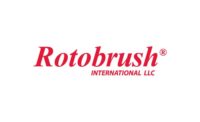The futurist William Gibson once said, “The future is already here, it's just not very evenly distributed.” When this notion is applied to the building industry, it couldn’t be more true.
While the residential sector has embraced IoT in the form of smart homes (everything from virtual assistants to smart lights), the commercial and industrial building sectors have been much slower to adopt IoT and smarter building controls. Taking a look at what has been holding these sectors back, we can see clear themes developing.
So, Why Haven’t Commercial and Industrial Buildings Been Much Smarter and Quicker on the Uptake? And What’s Changing Now?
- No. 1: the Tech Is Proprietary (aka it Doesn’t Connect to that Thing)
In order for a building to be smarter, multiple parts of it must be interoperable. That means your lighting systems and HVAC systems need to be integrated and able to ‘speak’ to each other. While BACnet promised to bring interoperability, the real mantra of the controls industry has often been “our tech is proprietary,” which is a nice way of saying, “we can’t allow you to connect these things together.”
In defense of IT departments, there were security breaches or botnet attacks in the early days of IoT in commercial buildings, which made many folks in the sector wary, but the industry has matured massively over the past three years. With innovative new entrants now able to connect to many of the industry juggernauts, bringing serious innovation, we are seeing changes in the air.
For example, Schneider Electric recently introduced a platform for IoT management of devices, which is open for collaborators to connect. Innovators like software startup Sally R out of Sweden have used it to build smart control algorithms for building controls optimization that both benefit energy and indoor air quality.
- No. 2 Everyone needs to get on the train for it to leave the station — Creating a single smart home is easy. It only needs one person to be convinced in order to add life-changing innovations to a space. With larger buildings, there are many groups to work through, persuade, and satisfy: IT, portfolio management, and accounting all need to be on board. How do you invest in innovation when it’s not typically someone’s job to drive innovation?
For change to happen, there needs to be a motivation serious enough for everyone to rally. Over the last 25 years, that stimulus has been energy efficiency. The next fundamental driver for change over the next 25 years is going to be healthier buildings. As we’ve seen over the last almost two years, nothing has been a bigger rallying cry to improve building health than a pandemic.
What’s Changed and How can Transformation Lead to Better Buildings During the Recovery?
- No. 1: There is wider adoption of technology — Data is everywhere now in business and modern life. The building industry has been quick to adopt both green/energy focused (LEED) and blue/healthy building (Fitwel or WELL) rating systems. With this transformation has come a wide variety of tools that measure carbon, energy consumption, as well as platforms that demonstrate to tenants and employees what’s happening in a building in near real time.
However, the one area that data insight has been slowest to integrate has been IAQ. While CO2 and other monitors have been around for a long time, historically, building operators have seen them as a threat. Letting everyone know what is happening in a building can backfire, but now that IoT IAQ devices are readily available, a tenant or employee can access a simple version of insight and just bring it to the office. No longer can building facilitators or managers hide from the fact that data driven decisions around IAQ can now be made across the industry without their approval (or sometimes knowledge, until too late).
- No. 2 The pandemic has been a rallying cry — Clean air became a major focus in 1952, when the Great Smog descended on London. On Dec. 2 of that year, a noxious, 30-mile-wide air mass, full of acrid sulfur particles, descended on the city of London. It didn’t quickly dissipate, it got worse every day for five days and smothered the city. Many experts now estimate that the Great Smog (caused by localized industrial air pollution and from coal heating which was popular at the time) claimed at least 8,000 lives and, perhaps, as many as 12,000. After all that devastation, it still took until 1956 for the first Clean Air Act to be passed in the U.K. This was actually early when you consider that the USA only passed their clean air act in 1970.
We are going to see the same trajectory for the building industry when it comes to IAQ. Ask anyone and they’ll tell you regulation is looming, but it will still take at least five years’ worth of data (which the industry doesn’t have because of a lack of IAQ monitoring) before it arrives.
This rallying cry, brought on by the events of the past two years for a move toward regulation, will also apply to building control systems, which (again ask anyone) are 95% controlled by temperature alone. This means, if CO2 goes up or VOCs, the building system isn’t able to adjust. Expect all of this to change as regulation meets new technology that is better suited to getting the job done to improve our buildings. Something that has been a long time coming.






